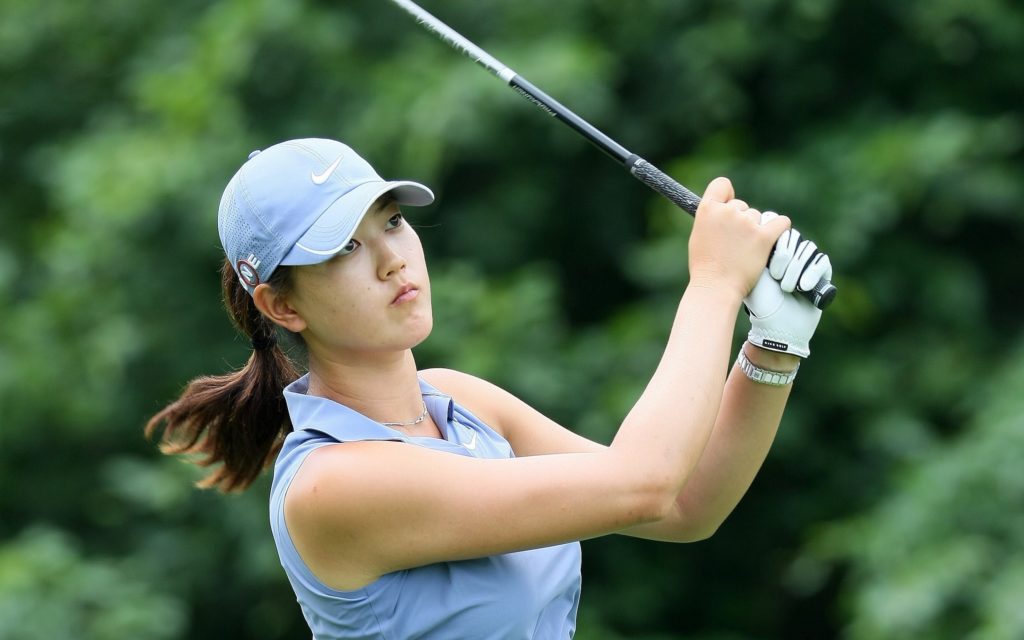
Michelle Wie qualified for a USGA amateur championship at age 10
By Christina Ritchie Rogers. Once excluded from the sport altogether and still prohibited at some golf clubs, women now are a key demographic in the business, which continues to see courses close nationwide. But attracting and retaining women to the sport continues to prove challenging, due in some part to the “gentleman only, ladies forbidden” stereotype (and acronym) that might resonate with non-golfers.
“The golf business has always been trying to battle that stereotype–that it’s a sport for men, a sport for the elite,” said PGA golf professional Eric Keith, who worked at both Pinehurst and The Point (now Trump National) before leaving due to a back injury. “It’s every golf professional’s job to continue to battle that stereotype.”
But the male-centered legacy isn’t the only barrier to women’s involvement in the sport–many factors act as deterrents, Keith said, including the exhaustive, intimidating rules; high cost of equipment and memberships; and the significant amount of time needed to play even just one round.
“The game was built and developed with as many walls as possible,” he said, and shifts in people’s lifestyles, our culture, and the economy have only increased the number of barriers. In order to survive, clubs need to find ways to break down those walls and get new people engaged in the game, he said. Women are a key demographic.
Mooresville Golf Club Manager Luke Steimke believes the way to increase female involvement and thus increase club revenue lies in leagues–and lots of them. Steimke has also worked in private, semi-private and public courses in Virginia, Arizona and Florida.
Leagues are entry points
“In my experience, two things save a club: memberships and league play,” he said. Leagues are entry points for new golfers and new members, and league events and programming guarantee revenue. Steimke currently manages more than 10 league events weekly at the Mooresville club, which results in thousands of rounds played per year, he said.
But leagues go beyond the bottom line in sustaining the sport, because they help attract and retain new female players. When done right, ladies’ leagues break down many of the perceived “walls” that keep women out, Steimke said.
Trish Schimel first took up golf in 1997 when she and her husband, Larry, moved to the River Run neighborhood in Davidson. She found an immediate affinity for the sport and continued to play, despite the fact that from what she could tell, there were few women in River Run who played as much as she did, if at all. The Schimels recently moved to south Mooresville and joined the Mooresville Golf Club, where Trish was thrilled to find an active women’s league with more than 85 participants.
“In my experience, private clubs certainly seem to still be more male-dominated,” Schimel said, which she believes can be a deterrent to female beginners.
“It can be intimidating to walk into the pro shop, which is usually full of mostly men,” she said. “You feel silly because you don’t know the game and all the rules and etiquette yet.” Now an experienced golfer with more than 20 years in the sport, that intimidation has faded for Schimel but she knows other women still feel it. She is encouraged to see more female staff members and female pros.
“I also think the time commitment affects the number of women who play,” she said. “Many of them are working, or have families, or both, and they don’t have 41/2 hours to devote to a game.”
More women now
Carole Scoggins, a River Run resident and golfer, first started playing golf with her husband when her children were young. She remembers the difficulty she had fitting in play time.
“I’d drop my daughter off at preschool and try to squeeze in golf in the two hours before I needed to be back and pick her up,” Scoggins said. “I was able to play more seriously once she was in Kindergarten.”
Scoggins now has played for more than 10 years, and has noticed more women playing golf in recent years – particularly in leagues and competitions, she said.
“We have a lot of working women in River Run, so we have a lot of 9-and-diners,” she said – women who want to play golf, but perhaps don’t have the time to devote to 18 holes regularly.
Understanding the scheduling challenges busy women face, Steimke has diversified his Mooresville league offerings, with groups meeting in the mornings, evenings, and on weekends, for both 9- and 18-hole rounds.
Diversification
Diversification of offerings and increased engagement efforts have taken on new importance over the last 10 years, as economic downturn and waning participation have led to numerous club and course closings. According to a 2016 article on Bloomberg by Patrick Clark, the golf industry experienced a boom up until the early 2000s, driven by developers who wanted to offer golf course amenities to homebuyers, but over the last decade more than 800 golf courses have closed nationwide and the 2008 recession dealt a blow to the industry from which it still has not fully recovered.
“When you’re losing golfers, and losing golf courses, you have to find ways to engage new members of all types,” Steimke said. “You need everyone – any age, any level, any gender.”

Discussion
No comments yet.